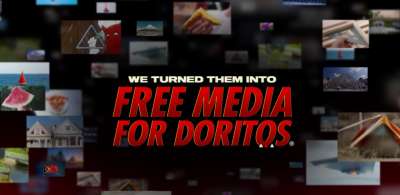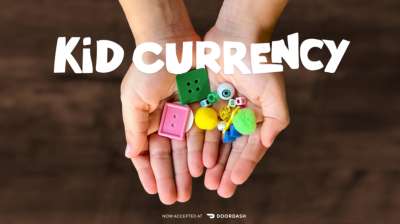Advertisers Watching Ads - Episode 152
Every Mother’s Day, children need to find a way to get the money for their mothers’ gifts - but is this really a consumer problem, as the DoorDash Kid Currency campaign tries to tell us in this week’s episode?
The ad chosen by Contagious encourages mums to upload photos of their “kid currency” to win a $75 DoorDash gift card for flowers. Although the insight is pertinent, is the objective of this ad clear enough? How effective is it in creating engagement? And why did our guests Laura McNally (Marketing Director at Auto Trader UK) and Conor Byrne (Host of the Podcast “That’s What I Call Marketing”) only rate it a 2 out of 5?
Watch the full episode to see the ad and their comments.
Transcript
Transcript is automatically generated, so not perfect, but you get the idea!
Tom Ollerton 0:00
Hello and welcome to Advertisers Watching Ads. My name is Tom Ollerton. I'm the founder of Automated Creative, and this is a weekly show where brands discuss other brands' ads.
So we are going to see an exciting ad today by DoorDash but before we see the ad, let's meet this week's guests.
Laura McNally 0:39
Hi, everyone. I'm Laura McNally and I lead Consumer Marketing at AutoTrader.
Conor Byrne 0:43
Hi, I'm Conor Byrne, and I'm host of the podcast, "That's What I Call Marketing."
Tom Ollerton 0:48
Right. So we've got an odd one, an interesting one for you, but let's see it.
I want you to give it a mark of five, one two, three... A two and a two. Right, Laura, that's quite a short promotional video, but what is actually going on in this campaign?
Laura McNally 1:34
So my take on it was that it's to promote DoorDash delivery services. So online grocery and food delivery, but they've kind of piggybacked on a moment in time, which is Mother's Day, to encourage people to take photos of their children with their currency in their hands. So that could be something creative. It could be LEGO, it could be toys. Presumably the mother then takes the photo of that object, uploads it with the correct hashtags, which was #KidCurrency. And then 400 people would then win a $75 gift card towards flowers. The premise being that mothers usually end up having to buy their own Mother's Day flowers. So this was a way of trying to, I guess, get the children's participation in the gifting process.
Tom Ollerton 2:16
Conor, what was your take on this?
Conor Byrne 2:18
So that idea to me, like there's a real... There is an insight there, which is, you know, kids do want to buy their moms something for Mother's Day, but they obviously don't really have the money to do. So how can DoorDash play a role in and a space probably that they may not have had a role to play before. So I thought it was a very interesting and human truth, right? Which is, which is a good place to start. I think the insight is true and it's there and it's coming through in the work around the idea of kids currency. I think the mechanic is maybe a little bit complex and difficult to execute. It's probably given some of the restrictions they were up against. What's happening is I think this is a really nice idea and then you have to go to legal, and legal are saying, "Actually, we can't get the kids to post the pictures because..." You know, so I think they have to work within some constraints to then figure out the mechanic.
Laura McNally 3:06
I don't have children, so I can't relate in that regard. But I did ask a lot of my friends that were parents yesterday what they were, what they thought of it. And I think they similarly believed that it was quite hard to follow what was being asked of them. And one friend did say she would rather just give her child £5 to go and buy her a bouquet of flowers. I think it's probably a given and it's widely accepted that that's, you know, if they are to receive gifts on those days, that the means to do that is to have to get them pocket money or money to be able to do that. But like you say, or the other, you know, someone else helps another family member to encourage them to do a card or something that they can create without currency or money. I do like the trading aspect to it. There's something inherently social about that. I suppose what happened is the same if we come up with the user-generated content idea, you get really excited in-house and you think everyone's going to rush out and it's going to go viral. And then actually the barriers to entry are way higher, even when it is as simple as taking a photograph of your child with their creation in their hands.
Conor Byrne 4:04
Like, what was the objective? Like, were they trying to build an association between DoorDash and flower delivery? Like, you know, so I don't know. For example, was it just known as a food delivery? And they needed people to think of it for different occasions and, you know, kind of expanding their, their category, so, yeah, without knowing that you don't know what was the objective, what was success? I'm guessing it wasn't number of entry. In my view, I don't think it would be number of entries because that, you know, that's... We're definitely getting into convoluted territory there in terms of the mechanics. So, yeah, you'd love to know about and kind of go with what was the objective. And then even the, I think the point about the legal piece is kind of interesting. Not throwing legal people under the bus, but perhaps what happened there was, you know, a really nice idea... You know, it was created in a vacuum and then somebody decided, "Well, we should ask legal what we do here." And at that point is far too late versus when you, when we have that initial idea, actually, sitting with someone in legal in the room early and kind of going, "Here's something we're thinking about doing. We haven't gone to it. We haven't briefed today yet. Like, what do you... What do you think?" And then, sometimes that can actually... You bring the constraint in, constraint in early like that wonderful book, "A Beautiful Constraint." And then you start thinking differently. And that might have led to a different, different output in the end. Again, I don't know.
Tom Ollerton 5:20
What have you learned from this? What will you take back to your teams?
Laura McNally 5:22
We keep knocking around this idea of user-generated content because I think when it comes to cars, it feels like lots of people are very passionate about their cars. But I do think we have a tendency to kind of navel gaze and assume that everyone's going to be as passionate as we are. And perhaps that's slightly what's happened here, too. There's a danger of kind of drinking your own Kool-Aid a bit and you're very excited about your product and your services and expect that other people will be too. So I think it will probably make us reconsider the approach that we take there and how high the barrier to entry might be. Obviously, the lower, the lower the better. I like that paying it forward, the social element to it, that kind of active participation and if it does work, then when you've made a conscious effort to engage with the brand in that way, I think your, your memory of it will be run much deeper than if you didn't. So a big fan of the, the sentiment, I guess, around it. So we'd probably look to see how we could maybe adopt that, but modify it so that it's clearly understood. I guess one thing you could say as well is that it's another thing that we'd need to be cautious of is that you want it to be as inclusive as possible. So you could say that those... Same with Mother's Day, Father's Day, there's lots of people that find those days difficult. So could they have done something that, you know, didn't restrict them in that way but then also showed their values as a brand?
Conor Byrne 6:40
Like, it's true that kids want to do something for their mother or their father or you know, on that given day. And so I think that's and that's really nice and being able to kind of find a way for them to, to communicate. As you know, the linkage is probably where it struggles a bit. And the, you know, the mechanics of actually entering and, you know, all that. I, you know, I'd love to be a fly on the wall of the, on the review going, "Okay, what would we do differently if we're going to do this again?" Because it might just be that or you know we do, we're DoorDash we do, we do door drops in all these different houses in these areas. You know, as promotional leaflets. I'm sure they do that. Like, why don't we include a card making gifts then next time, like it could be that. And that's how they extend, you know, the... the idea. But, yeah. So but that's... trademarks, IP, another idea, if anyone from DoorDash is listening. 50-50, Tom...
Tom Ollerton 7:39
Would you sign off this campaign off in its current form? Yes or no? One, two, three... Two thumbs down. DoorDash, there you have it. Conor, Laura, thank you so much for your time.
What next?
Subscribe to our YouTube channel
Listen to our ‘Shiny New Object’ Podcast on Apple Podcasts, Spotify and Soundcloud.
Want to stay updated with the latest industry news?
Subscribe to our newsletter
and we will keep you posted.

Domino's Ad Reviewed
15.12.2021We review the brand strategy and marketing effectiveness behind the latest ad from Domino's chosen by our partners Contagious. Guests are Kristof Neirynck (Future CMO of Avon) and Scott Morrison (Founder of The Boom!).

@doritos #TriangleTracker Ad Reviewed
15.06.2023Discover how Doritos targets the "anti-ad" generation with their Triangle Tracker ad using a Snapchat filter. Join marketing experts on Advertisers Watching Ads as they discuss its innovation and engagement.

Dove Detox Your Feed Ad Reviewed
25.05.2022We review the brand strategy behind the Detox Your Feed ad for Dove, created by Ogilvy. What did our guests think of the marketing approach and is the ad as effective as it sets out to be?
